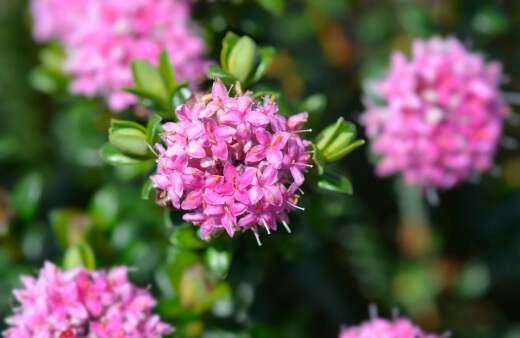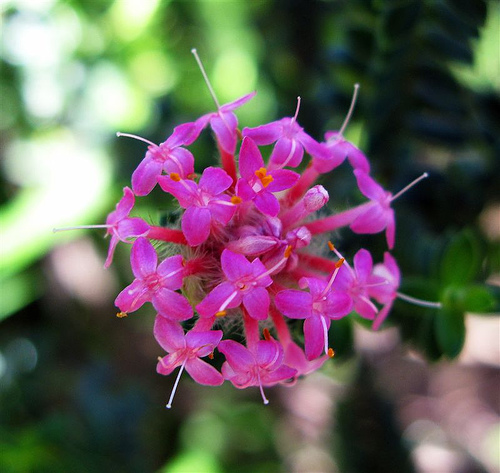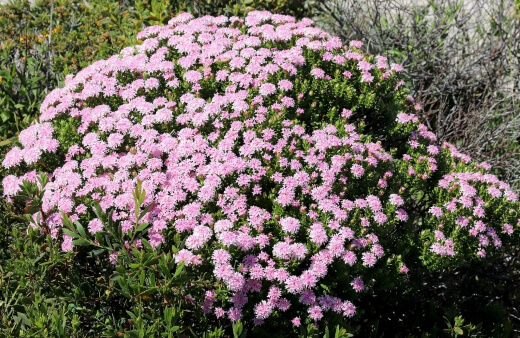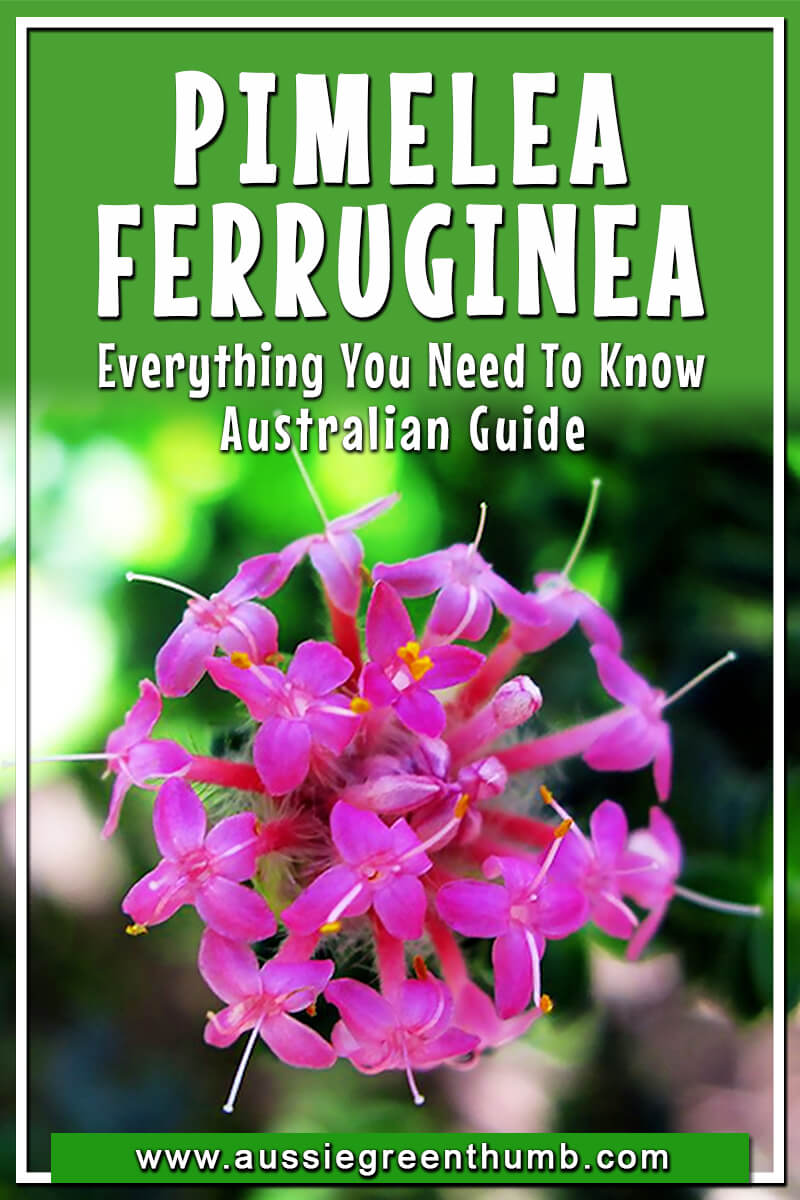Growing Australian native plants is always a great idea, as they almost guarantee success, being accustomed to our climate and general environment. Few are as striking as the Pimelea ferruginea, or pink rice flower.
This fantastic flowering plant is a great way to add an almost year-round pop of pink into your garden. With large flower clusters and dense growth habits, this species is perfectly suited for coastal gardens, rockeries, as a border plant or even in pots around your garden.
Here is everything you need to know to grow, care for and propagate Pimelea ferruginea.
More...
Getting to Know Pimelea ferruginea
Genus: Pimelea
Species: P. ferruginea
Family: Thymelaeaceae
Common Name: Pink rice flower
Flower Colour: Pink
Foliage Colour: Dark Green
Growth Habit: Shrub to 1m
Flowering: Spring

While this species struggles to grow in tropical and sub-tropical climates, it can be found happily growing along the entire South West coast of Australia. Belonging to the Thymelaeaceae family, this species is a smaller growing shrug with a long-flowering dense appearance.
Its bloom clusters often range in colour from deep to light pink—these contrast magnificently against the dense, dark green foliage. Other common names for this species include the rosy rice flower and rice flower pink solitaire.
How to Grow Pimelea ferruginea

Pimelea ferruginea prefers a coastal climate, but they have been known to succeed inland. What gives the Pimelea its beauty is the way the flowers cluster together at the end of the stem.
The individual flowers themselves are quite small but because they cluster together much like the Hydrangea.
While it only grows about 1 metre tall, it can grow as much as 2 metres wide, so make sure you give it sufficient space to grow, especially if planning on growing your pink pimelea in a pot.
As with most flowering plants, it requires a lot of good sunlight. However, while it may prefer full-sun conditions, it is possible to grow pink rice flowers in the partial shade. Though, you may have slightly fewer flowers.
This adaptable species can grow in almost any kind of soil. Naturally growing in rocky landscapes and many coastal sand dunes, if you’re planning on growing pink rice flowers in a pot, it’s best to choose a sandy or loam soil medium.
The most important factor will be to guarantee well-draining soil. Pimeleas suffer in overly moist conditions.
How to Propagate Pink Pimelea
Unfortunately, propagation from seed is incredibly unreliable with this species.
Luckily, though, you can freely propagate young plants from a stem cutting. These can often be readily available after pruning.


Get Your Free Guide:
Master Growing Australian Natives eBook
A Must Have Complete Guide for Every Australian Garden
Get Your Free Guide:
Master Growing Australian Natives eBook
A Must Have Complete Guide for Every Australian Garden

After taking a cutting, you can simply dip the cut end of the plant into a rooting hormone, then plant directly into the soil, allowing it to root. Be sure to give your cutting plenty of moisture and sunlight in the first few weeks.
Pimelea ferruginea Care

Once established, this plant requires very little additional care. Be sure to allow water to drain fully between watering to avoid any issues.
You can support your pink rice flower twice a year with a little bit of fertiliser. A good native fertiliser should be used during the winter, while a softer, mineral fertiliser can be added during the spring.
Pruning is not always necessary but can help you to curb unsightly spent flowers and promote further dense growth. Be sure to use a sterilized pair of shears to avoid the spread of any disease or fungus.
Pruning should be done after the first major flowering season to encourage continuous growth. Pinching back new growth will also help to maintain your shrub’s fullness.
Pimelea Frequently Asked Questions
Where do Pimelea Come From?
The Pimelea genus stems from many regions across Australia and New Zealand. In total, there are around 80 different species in this genus, each with its own unique and exciting characteristics.
Is Pink Pimelea Endangered?
Some of the Pimelea sub-species are listed on the critically endangered list. This includes the pink pimelea and spiny rice flower. However, the pink rice flower is not on that list. Either way, it’s a good idea to start growing some in your garden.
Is Rice Flower Plant Poisonous?
Unfortunately, there is such a thing as pimelea poisoning, also referred to as St. George disease. Whether fresh or dried, all parts of the Pimelea plant are poisonous, especially for sheep, horses and cattle.
For cattle, this kind of poisoning can be deadly.
For more Pimelea varieties, check out the list below:

Wrapping Up Our Pimelea ferruginea Growing Guide
There are many reasons to start growing Aussie native plants, and if you happen to reside in a coastal area, then the Pimelea ferruginea is for you. In the right conditions, you’ll be able to enjoy the bright and glorious blooms of this cultivar almost all year round.
Are you looking for some other interesting Australian native plant to add as a feature in your garden? Check out some of our favourites, like the Kunzea ambigua.
Take care to ensure that your Pimelea ferruginea is getting enough sunlight to ensure a big and voluptuous bloom.
Published on August 15, 2021 by Lorri Hopkins
Last Updated on October 1, 2024




